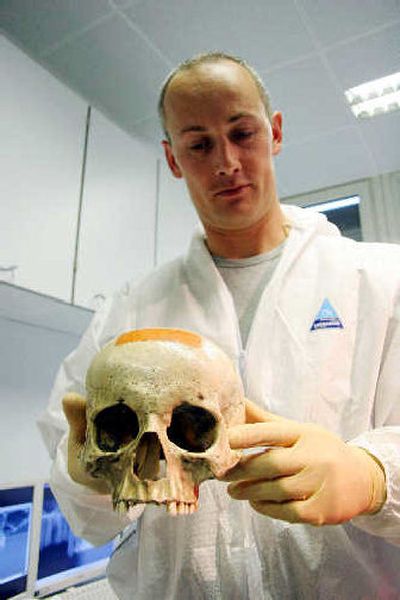Mozart mystery remains unsolved

VIENNA, Austria – It’s a Mozart mystery as haunting as his “Requiem” – and apparently it won’t be solved anytime soon.
After months of sophisticated DNA sleuthing reminiscent of a “CSI: Crime Scene Investigation” episode, forensics experts admitted Sunday on national television they still can’t say with certainty whether an ancient skull was the composer’s, as some believe.
Past tests on the skull also were inconclusive, and a joint analysis conducted by the Institute for Forensic Medicine in Innsbruck, Austria, and the U.S. Armed Forces DNA Identification Laboratory in Rockville, Md., raised more questions than answers, lead researcher Dr. Walther Parson said.
“For the time being, the mystery of the skull is even bigger,” Parson’s team concluded in “Mozart: The Search for Evidence,” a much-hyped documentary that aired Sunday evening on Austrian state broadcaster ORF in the run-up to the 250th anniversary of Mozart’s birth.
Since 1902, the skull – which is missing its lower jaw – has been in the possession of the International Mozarteum Foundation in Salzburg, the elegant Austrian city where Wolfgang Amadeus Mozart was born on Jan. 27, 1756.
Parson, an internationally renowned forensic pathologist, said genetic material from two teeth removed from the skull was analyzed and compared with DNA samples gathered in 2004 from the thigh bones of two skeletons ex-humed from the Mozart family grave in Salzburg’s St. Sebastian Cemetery.
Experts had assumed the remains were of Mozart’s maternal grandmother and a niece. But DNA analysis showed that none of the skeletons in the grave were related, making it impossible to prove that the skull was Mozart’s, Parson said.
“The dead took their secrets to the grave,” the documentary concluded.
Mozart died in 1791 at age 35 and was buried in a pauper’s grave in Vienna’s St. Mark’s Cemetery. The location of the grave initially was unknown, but its likely location was determined in 1855.
Legend has it that Joseph Rothmayer, a gravedigger who knew which body was Mozart’s, sneaked the skull out of the grave in 1801. Today, the spot is adorned by a column and a sad-looking angel.
The skull long has fascinated experts. In 1991, a French anthropologist who examined it made the startling – though unconfirmed – conclusion that Mozart may have died of complications of a head injury rather than rheumatic fever as most historians believe.
Pierre-Francois Puech of the University of Provence based his belief on a fracture on the left temple. Mozart, he theorized, may have been injured in a fall, and that would help explain the severe headaches the composer was said to have suffered more than a year before his death.